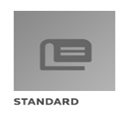Cart
0
0
item(s)
-
$0.00
No products
To be determined
Shipping
$0.00
Total
Quantity
Total
Product successfully added to your shopping cart
There are 0 items in your cart.
There are 0 items in your cart.
Total
CSA Z305.13:13 (R2020)
CSA Z305.13:13 (R2020) Plume scavenging in surgical, diagnostic, therapeutic, and aesthetic settings
standard by CSA Group, 12/01/2013
Reduced price!
M00006732
New product
Full Description
Preface:This is the second edition of CSA Z305.13, Plume scavenging in surgical, diagnostic, therapeutic, and aesthetic settings. It supersedes the previous edition published in 2009.
Scope:
1.1
This Standard applies to systems and equipment used to capture and evacuate plume. It applies to all settings where such systems and equipment are used, including, but not limited to, the following:
a) surgical facilities
b) dental clinics
c) medical offices
d) veterinary facilities
e) laboratories and other research and testing facilities
f) cosmetic treatment facilities
g) teaching facilities
h) manufacturing facilities
i) professional exhibitions and trade shows
1.2
This Standard provides guidance on the purchasing, installation, testing, use, servicing, and regular maintenance of plume scavenging systems (PSSs).
Note: See Annex A for information on the types of plume scavenging systems and Annex B for illustrations of typical plume capture devices and transfer tubing.
1.3
This Standard does not include requirements for
a) anaesthetic gas scavenging systems (see CAN/CSA-Z7396.2)
b) medical vacuum systems and equipment (see CAN/CSA-Z7396.112)
c) heating, ventilation, and air conditioning (HVAC) systems (see CAN/CSA-Z317.2)
d) aspects of laser safety other than airborne contamination and particles produced by laser beam interaction with materials (see CSA Z386)
e) aspects of electrosurgery and electrocautery other than airborne contamination and particles produced by electrosurgery or electrocautery resulting from interaction with materials
1.4
In this Standard, "shall" is used to express a requirement, i.e., a provision that the user is obliged to satisfy in order to comply with the standard; "should" is used to express a recommendation or that which is advised but not required; and "may" is used to express an option or that which is permissible within the limits of the standard. Notes accompanying clauses do not include requirements or alternative requirements; the purpose of a note accompanying a clause is to separate from the text explanatory or informative material. Notes to tables and figures are considered part of the table or figure and may be written as requirements. Annexes are designated normative (mandatory) or informative (non-mandatory) to define their application.
1.5
The values given in SI (metric) units are the standard. Where values are given in parentheses, they are for information only.




